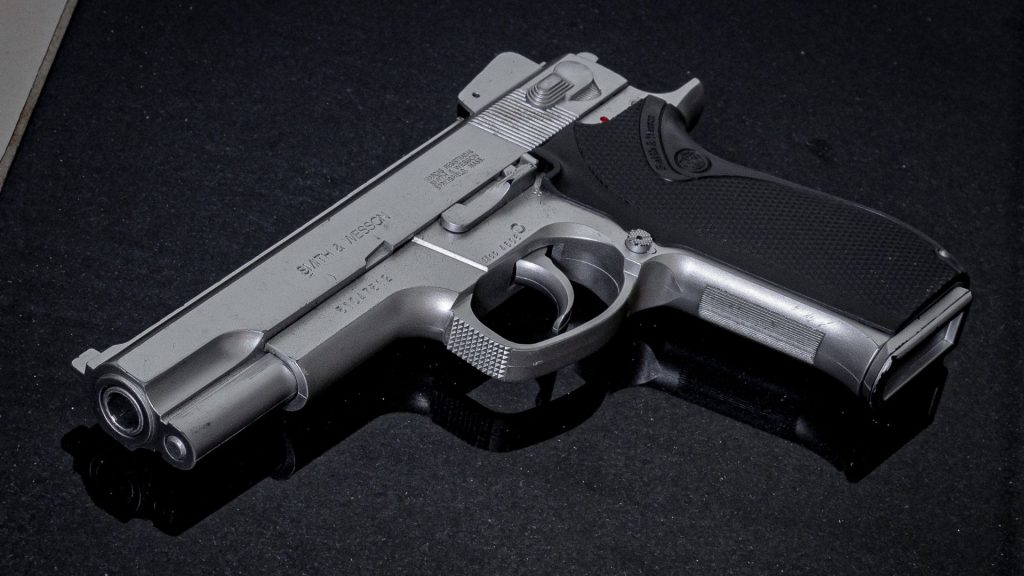District To Allow Staff To Carry Guns In School
A school district approved an initiative to allow faculty members to carry guns in school, sparking a debate over the initiative.

It’s been over two decades since the deadly Columbine High School shooting massacre. Since then, there have been more than 304 fatal school shootings, and the occurrences are only increasing each year. The public has widely varying opinions on how to combat the issue, but many believe arming school staff is a major deterrence against gun violence. To this, a Texas school district is joining that effort, and will soon allow faculty members to carry concealed guns in school.
The La Vernia ISD is a small school district located near San Antonio, Texas. According to reports from a local news outlet, KENS5, schools that fall under the district’s jurisdiction will soon allow teachers and faculty members to carry concealed guns inside schools. The decision was made in a recent unanimous vote by the board of trustees. The adoption of this new policy falls under a Texas government-approved initiative known as the Texas Guardian program.
The Texas Guardian Program was created by Jess Sellers. After the deadly military base mass shooting at Fort Hood in 2009, Sellers came up with the idea for the program. At the time of the Fort Hood massacre, Sellers’ son was present at the base on a school field trip. Today, the program is sanctioned by the Department of Public Safety. Texas Penal Code allows schools wishing to participate in the program to do so so that teachers can carry guns in school.
La Vernia IDS’s safety and security director, Dr. Michael Duffek, praised the board’s approval of the initiative during a press release. He, like many others, feels that it will increase student and staff protection in the event of an active shooter. For those teachers wishing to enroll in the program to carry guns in school, they will have to undergo 40 hours of training. Furthermore, they must also already have a license to carry. Of the 40 hours of training, the program requires 20 hours at a firing range in addition to another 20 hours of in-classroom training. They must also pass psychological exams each and every year, and are required to participate in random drug tests.
Some parents spoke up in approval of the board’s decision to allow teachers and staff to soon carry guns in school. Lucinda Morales is the mother of a soon-to-be kindergartener within the district. She feels that the decision will give her daughter an added layer of safety inside the walls of the school. Furthermore, she pointed to a sense of relief she feels as a parent, making her feel “more comfortable.”
Sense of security is a major reason pro-guns in schools activists laud for the cause. According to information from the National Conference of State Legislators (NCSL), this is the exact reason lawmakers like Colorado Rep. Patric Neville are for the initiative. Neville himself is a survivor of the Columbine shooting massacre, and he has introduced a plethora of bills during his time in office focused on giving more concealed carry permits for guns in school. “The biggest benefit we have is it creates a deterrent,” he said.

Neville feels that shooters often target schools because of the lack of security. He and others feel that by allowing teachers and staff the option to carry concealed guns in school, fewer shooters will ever even attempt to open fire. Furthermore, advocates point to the possible lives these initiatives could save, as teachers would not have to necessarily wait the imperative time between alerting police and possibly stopping an active shooter.
On the other side of the debate, some feel that giving this staff the right to carry guns in school might only make the problem worse. Paul Gors, a La Vernia ISD parent and gun rights activist is curiously against the board’s approval. As a spouse of a military wife who isn’t even allowed to carry her weapon in public, he feels the decision is “wild.”
Some opposers to the measure, like Arkansas Senator Joyce Elliot, feel that decisions like this can disproportionately affect students that grow up in settings of traumatic gun violence, especially inner city kids. “To even consider teachers having guns in a classroom, you might think it’s a great idea but kids are traumatized by thinking that teachers have guns,” she said. Furthermore, advocates opposed to guns in schools say that safety training often puts children at further risk of becoming targets of gun violence. They feel that inadequately trained personnel might end up unintentionally harming students if they are given the right to carry guns in school.
Despite which side of the spectrum you land on, initiatives like this are gaining traction across the nation. More than half of all states now have laws allowing some form of staff to carry guns in school, and many more are looking to join the effort. But because of how recent many of these programs are, there is yet any clear evidence as to whether or not it will deter gun violence or not.







